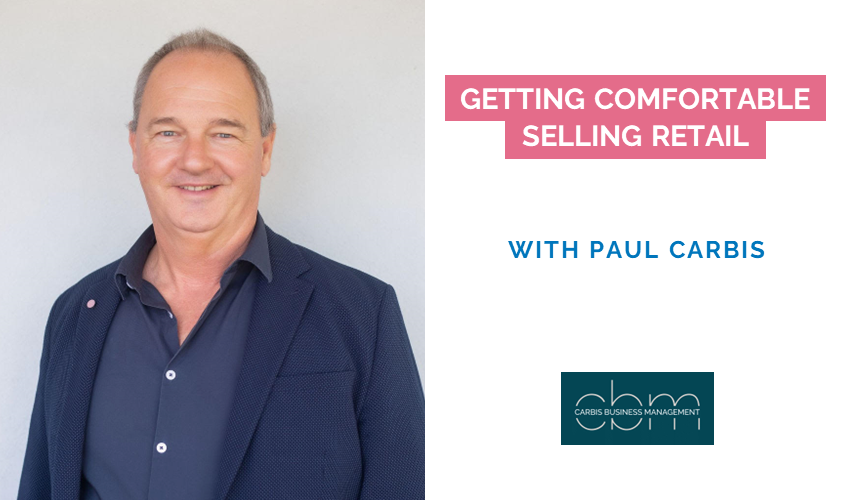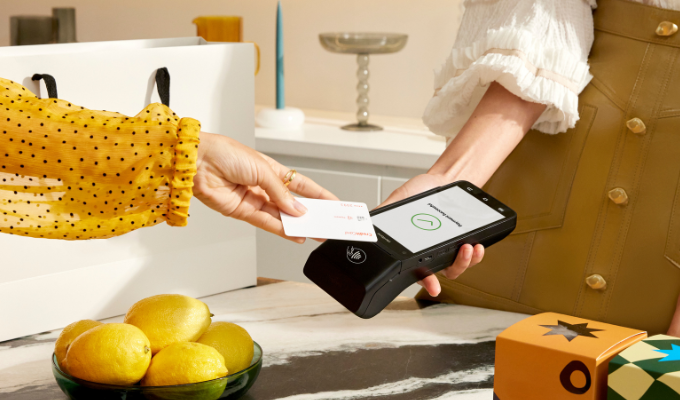Selling retail can be an uncomfortable task for a lot of hair and beauty professionals. It can feel awkward to “push” your clients to buy products when you’re trying to build a strong relationship and turn them into regular clients.
But it doesn’t need to be that way!
Watch the video below or keep reading to hear from Paul Carbis about the best way to approach this topic with a client, and his top tips for helping us to get comfortable selling retail.
Why can it feel so uncomfortable to sell retail?
“I don’t think selling anything is a natural part of our lives. We love to communicate but selling in Western culture is a bit like pushing things onto other people. Especially in the beauty industry where some of the products we sell can be quite expensive,” Paul explained.
“It’s a cultural thing more than anything else, but it’s something we need to get over for lots of different reasons. The sooner you realise that it’s not such a terrible thing the easier it becomes. The more you practise it, the better you get at it.”
What’s your approach to selling retail?
“The only way I can get results on someone’s skin is for them to see me regularly and to do what I tell them with what I give them exactly how I show them at home” said Paul.
“For example, if you came and saw me every three weeks and you were to use the products that I give you to use at home morning and night as I prescribed you would do 42 home care treatments in between the time that you saw me again. So, it’s almost more important than actually coming to see me in the salon because what you do every single day is what changes your skin.”
“You can see why selling retail is so important for me as a therapist, it’s the only way I can get the results for my client’s skin. It doesn’t matter what the issue is we’ve got the solutions for our clients but only if we’re willing to share them.”

People buy retail products
Paul then went on to say “Every single woman I’ve ever met has got stuff. Think about your mother, your sister, your girlfriend, your daughter. They’ve all got stuff, therefore the question isn’t do people buy products, the real question is why the hell aren’t they buying it from you?”
“In the salons I work in they have products that I know work. The formulations are salon-grade formulations with active ingredients that get results. The majority of the products sold at pharmacies or supermarkets are sold by people who aren’t fully trained and the products aren’t active. Therefore, your client isn’t going to get the results they would from products bought from a professional beauty therapist or hairdresser. A lot of the time clients will come to me with a bag full of rubbish and as soon as I put them on an active product such as a hyaluronic acid their skin changes drastically. They are sold and will never go back.”
What to do when the answer is no…
“When people say no they’re not saying no to me and they’re not saying Paul I don’t like you. They’re saying no to the idea. It could be because they just purchased a new pair of shoes and they need to check in and see what’s happening at home, or that they don’t get paid until next week. There’s always a reason and some people need to have things repeated to them several times before they can make decisions” Paul said.
“Many people have been purchasing the same products from the same place for years, and so the concept of change is something they need to work through. Saying no doesn’t mean that they say no. When we get that through our heads, the idea of getting a rejection now and again isn’t personal. Half of those people will come back during the week and do exactly what you asked them to do in the first place. They’ve done whatever it is that they needed to work through to make informed decisions,” stated Paul.
“When you switch your focus from selling to helping if they say no it’s not an attack on you, but it’s just them saying not right now, or they’re not ready, or they don’t see the value quite yet.”
It’s your job
“There’s another factor as well that people have to understand. In our industry, it’s part of the job because it’s how we get results. If you’re a hairdresser and you’re allowing your customers to buy rubbish what you just did on their hair is not going to hold. The condition of the hair will not be maintained and they won’t see the value in what you just did. The same thing with the skin,” said Paul.
“If I allow you to walk out and buy rubbish and use that on your skin, you’re not going to see the results that I’m trying to achieve in the treatments. Therefore, not going to see the value in the treatments. So it’s part of your job. If I employ a beauty therapist they get a contract and part of that contract says that providing retail advice on retail products for them at home is part of their job.”
Paul went on to say “Imagine if you were hiring and I applied for a job with you and I said I’m a really good therapist I want the job that you’re advertising, but I don’t clean. How many salon Owners would go that’s fine I’ll hire you. No one.”
“So why is it that week after week we’ve got so many therapists throughout New Zealand who are saying to their boss in their KPIs, in their sales figures, I’m an excellent therapist I love working here but I don’t do retail. It’s not acceptable.”
“It’s something you need to learn. The easiest way to do that is to do your education on your products. There are a million different ways you can do this pick-up product manuals or talk to other staff members. Once you know your stuff people ask me about certain products or certain ingredients, and the words come out of my mouth without even my brain having to click in,” said Paul.

Your next steps
“I think you need to expect that for every client you see there is something for them, no matter what they’re in for.”
“I challenge every beauty therapist and hairdresser to go to the computer and see how many of their clients have all five of the most popular products. For example shampoo, conditioner, hair mask, comb. For a beauty therapist a good cleanser, moisturizer, etcetera. There’s always something for you to talk about. It’s a simple thing of doing your homework on your customers so that you know two things: do they have it and how long since they purchased it? Paul said”
“You can use your software for that easily, and Kitomba can give you the answers for both of those things. If you have a history that you can look up every single day. It takes a couple of minutes for each client to look up their history, see what they haven’t got, or how long since they last purchased it to see if they’re due again. Then is it a matter of asking them what they’re currently using, what they like, what they don’t like about what they’re using, and their results?”
Be proactive
“If I was coaching your salon, the KPIs that I would be looking at in Beauty is a one-in-three hit rate. In other words, if you saw 30 customers for the week you would need to have a minimum of ten retail sales. The second KPI is that retail home care products need to make up around about 30% of a beauty therapist’s total income for the week and about 20% of a hairdresser’s total income for the week. How do I know this? I visit about 100 salons a year. This is what a good therapist can achieve. There are no industry standards. There are no industry KPIs However, this is the expectation for all the salons I coach. A one in three hit rate and about 30% of their total income coming out of home care sales,” said Paul.
“It’s pretty easy to look at Kitomba and have a look at whether I am achieving those two figures. Not only can you do it for overall sales because you’ve got walk-ins as well, but you should be doing it for appointment sales also.”
“These are pretty easy figures for a salon owner or even a therapist to look at themselves. Do I ask for that immediately? No. I believe in a step-up system where you would give yourself a target of maybe three sales a week and then maybe five sales a week and then maybe $500 a week and then maybe $600 so that you’re stepping up in the background.”
Paul then finished up by saying “The KPIs need to be one and three and 30% for owners. Don’t be scared about talking to staff about their performance in home care selling. You can’t tell someone off if they don’t know where they’re at, they don’t know against what standard if they have no idea about where they’re at. I’ve had very experienced staff who weren’t making anything like 30%, but the minute I pointed it out and it became a focus for them, their performance increased quite quickly. So it’s not a taboo area that you should be scared of talking about. It’s a really important part of what you do. But better still, if it provides your clients with an improvement in their skin or hair, and helps retention, then it’s essential.”
Read more:





